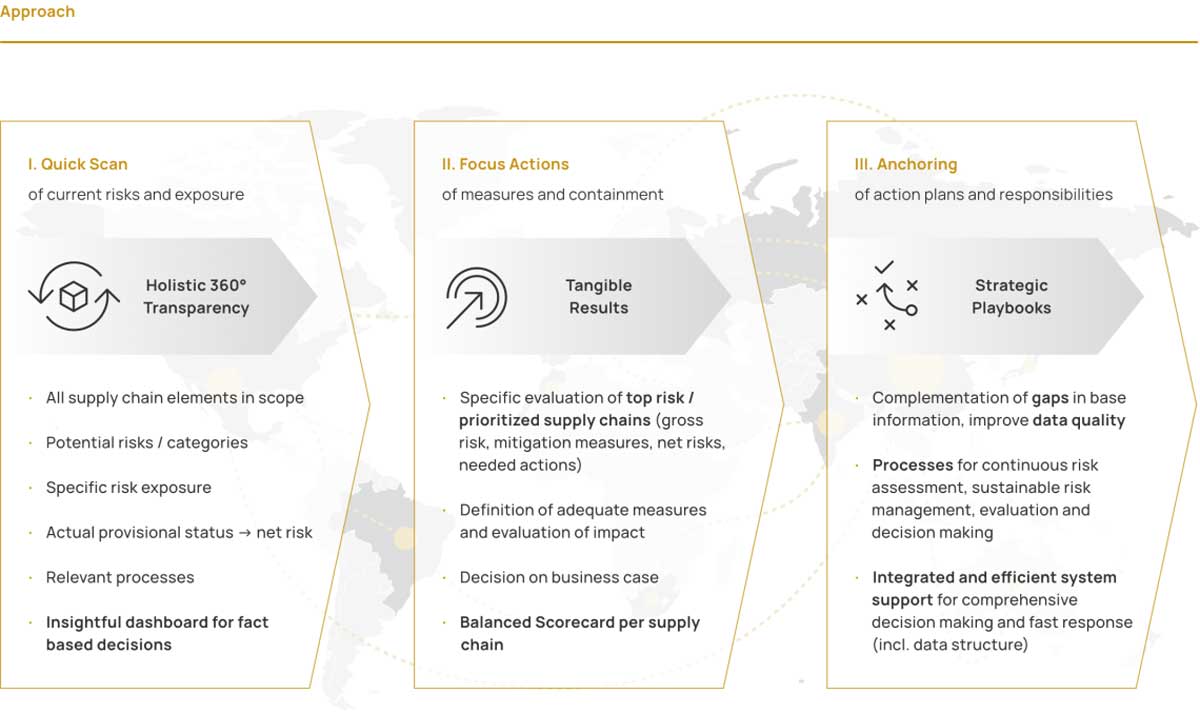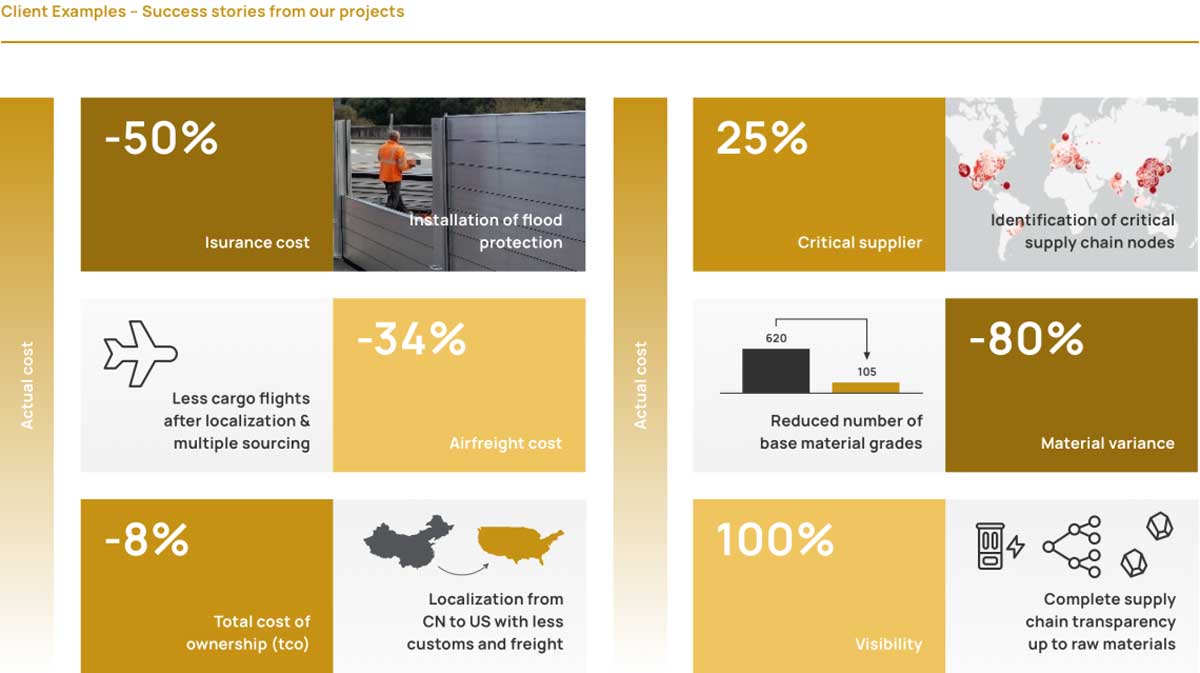Lack of transparency – most companies are flying blind
TSETINIS-EFESO project experience shows that while potential risks are known, most companies fail to avoid and mitigate them properly. The key success factor and starting point for building resilience is the creation of full transparency throughout the entire supply chain, all the way to the refinery or mine. Yet, this is already where the majority of firms fail.
WHAT are the relevant elements of the supply chain? (suppliers, customers)
WHERE are the identified elements of the supply chain located? (production sites, warehouses, …)
HOW are the elements connected?
Managing resilience requires a structured and fact-based approach
Major threats to supply chains are largely unknown. Fundamental core issues should be addressed – in a consistent and fact-based manner.
- What exactly does the supply chain network look like?
- How high is the existing risk exposure?
- What are suitable measures to avoid/mitigate risks?
- How should strategic SC resilience be built in the organization?
Increase your resilience and improve your future readiness!
Together with leading companies in the automotive industry, we have developed, applied and implemented a simple and proven concept that improves both resilience and profitability.
Three major steps are necessary
- Holistic 360°-Transparency
- Tangible Results
- Strategic Playbooks
Our services are your advantages
We support our customers’ business holistically – from analysis to strategic anchoring.
- Creating supply chain transparency at the relevant points
- 360° risk overview in a customizable dashboard
- Application of best practice measures
- Integrating relevant resilience elements into the organization to ensure long-term success even in times of supply chain crisis
Our success is proven by customer examples with measurable and tangible results.








